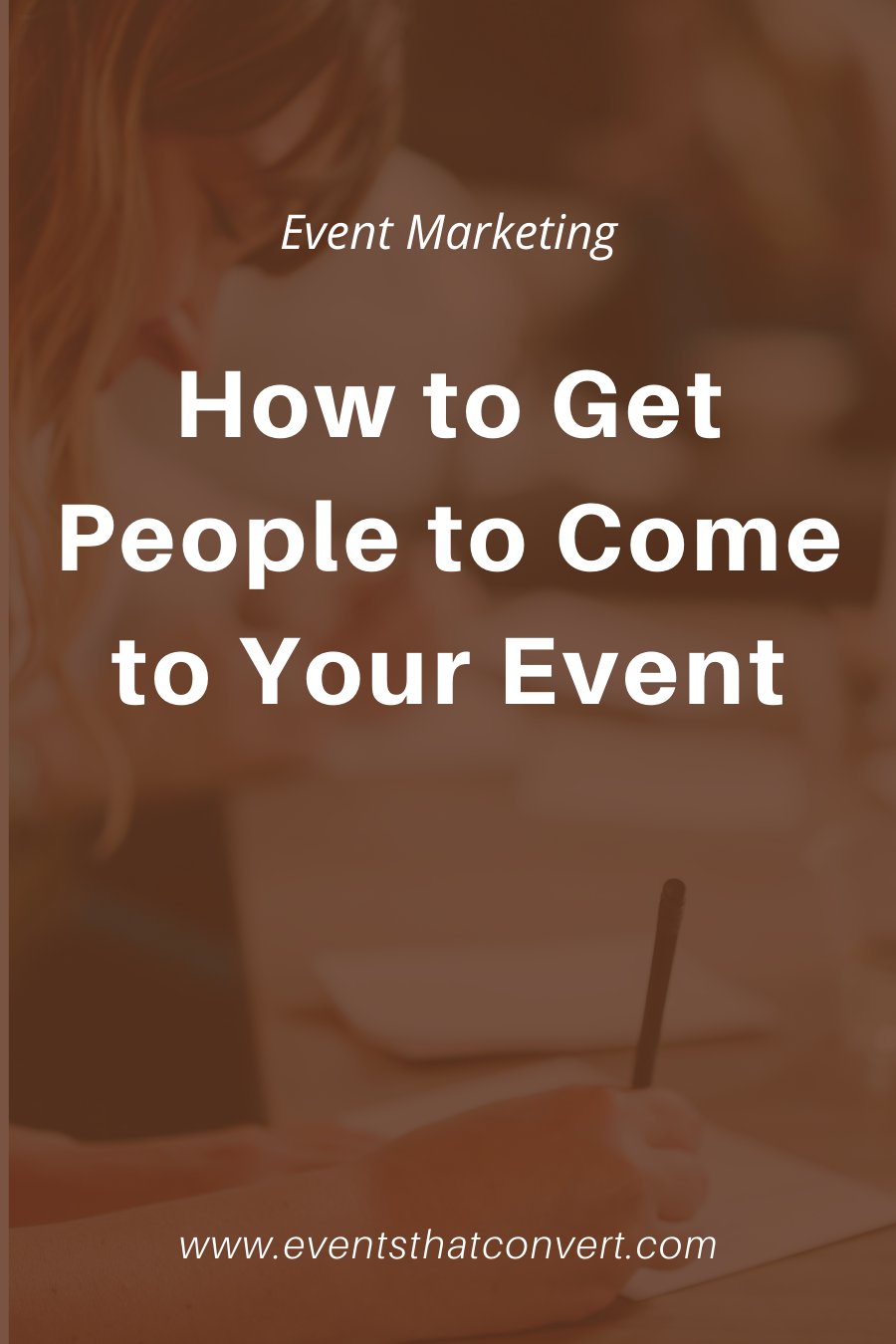How to Get People to Come to Your Event
Whenever I talk to a bigger event marketing firm about event attendance, they always ask me what tools I use for event marketing.
My answer is usually….”Ummmm….email?”
I get why they ask.
Most event marketing firms are running huge ad campaigns, automating and segmenting audiences, and converting their inbound leads to ticket buyers.
I don’t do that.
My clients don’t do that.
And if your business is about relationship building and closing high-ticket offers and big deals, THEN YOU SHOULDN’T DO THAT EITHER.
For context, planning a community-based event RELIES on customer experience.
I always say that the way you market your event is directly related to the types of attendees you’ll acquire.
If you do a ton of FB ads with discount codes and manufactured urgency timers?
You’ll get random folks loosely associated with your brand, who want cheap pricing and who make decisions under pressure.
But most of you?
Most of you want highly qualified leads who are somewhat familiar with you and your brand/community, who are already looking for your expertise and who can either evangelize your brand to others or who have influence within their company to develop ways to work with you as a service-or-SaaS-provider.
Which is why when clients are starting to recruit attendees for their event, I strongly suggest using email marketing as the primary promotion tool.
Here are the three phases of marketing any event:
1. Market research to warm leads
For new events, this is likely 6 months - 1 year prior to your event. This is where we warm up your folks and we encourage them to help us co-create the event (this builds customer ownership, which helps with recruiting efforts to the event).
Usually, this work is done EVEN BEFORE you’ve decided on hosting your event. You’re reaching out to your top accounts or top community members and brainstorming on the idea with them.
This accomplishes two things: a. it helps you pre-seed the idea that you’re hosting an event and b. it gives you insight into what you’re ideal customer might want to see at an event.
How: Before you publicly launch, reach out to 20 customers and ask for a 20-minute phone call where you’d be simply asking their advice. Ask them what they like or don’t like about in-person events. Ask them what would make it worth their time if they came to X location. Ask them what they’d like to learn and who else they’d like to see in the room?
2. Event Pre-Launch
This phase is when you’re incentivizing your warm leads list (which may have grown since your market research was completed) to either get on a pre-launch email list OR to purchase tickets before they go on sale to the public (which we do because we want to assume sellout — usually business development events we plan are only 50 - 200 folks.)
In this phase, your team is sending a LOT of 1:1 emails.
You’re following up with folks you talked to in the previous stage.
You’re emailing customers or prospects you’ve talked with in the past to see if they might be interested in the event.
And publicly, you’re using all your public marketing channels (social media, banners on you website, slide-in bars, etc.) to drive folks toward an email list signup (which you will then use to send them weekly or bi-weekly content tips, with a call to action to be “get ready to get your ticket on XX date!”).
The goal with this phase is to sell enough tickets to be able to actively launch knowing you have at least a few folks signed up AND to warm up your pre-launch audience with great content so they buy during active marketing phase.
How: Set up a public waitlist landing page where cold leads and prospects can sign up for email updates and/or to know when tickets go on sale. Then, nurture those leads with great content for 1-2 months prior to ticket sales.
With your WARM or HOT leads, open ticket sales for those folks at a lower price than your public price. Incentivize them to buy tickets early, so you can confirm the viability of the event.
3. Active Marketing
Active marketing is when the event tickets are officially on sale to the public.
For most of my clients, this part of the marketing process is a longer journey than they’d like.
A lot of times, we’re simply reinforcing the idea, consistently that we have an event as a product that clients OR POTENTIAL clients can buy.
In fact, MOST of the “active marketing” process is for prospects or cold leads, because by now, folks who are our hot or warm leads have probably either bought a ticket already or have declined the event.
Use the active marketing process as a “building” time…build your email list (which can be used to market other things), build your content bank (because you’re emailing these folks each week with content and a CTA to book a ticket to the event) and to build a relationship that MAY extend far beyond them attending your event.
How long do you market for? It really depends, but some folks market for over 6-months, with increasing price tiers throughout the active marketing period.
For me, I usually like a 3-4 month marketing window — you can still keep your energy, but you also don’t run the risk of the window being TOO long such that folks forget to sign up.
